MOLLIS Thunberg, 1778 (engl./ fr.)
Synonyms :
Globulea mollis (Thunberg) Haworth ex DC (1828)
Globulea subincana Haworth (1824) / Crassula subincana (Haworth) Dietrich (1840)
Crassula subincana var. decumbens Haworth (1824)
Globulea subincana var. erecta Haworth (1824)
Sphaeritis margaritifera Ecklon & Zeyher (1837) / Crassula margaritifera (Ecklon & Zeyher) Harvey (1862)
Section Globulea
Distribution : SA (Eastern Cape, Western Cape); Succulent Karoo and thickets.
Description (according to Tölken 1977 & 1985) :
Perennials forming shrublets up to 50 cm high, much branched, with woody spreading branches.
Leaves linear-elliptic, 10 - 20 (-30) x 2 - 3 mm, sharply acute, more or less flat above and very convex below and about as thick as broad, shortly velvety, grey-green to brownish grey; old leaves deciduous.
Inflorescence usually a round-topped thyrse with 3 to many globular dichasia (i.e. globular part-inflorescences are produced from one to two nodes of main axis), peduncle 15 - 25 cm long and covered with short erect hairs.
Flowers : Sepals triangular, 2 - 2.5 mm long, bluntly acute, fleshy particularly towards apices, with fine erect hairs and marginal cilia, grey-green tinged reddish brown, corolla tubular, almost cylindrical, fused basally for about 1 mm, cream, petals panduriform, 2.5 - 3-5 mm long, with elongate-ellipsoide appendage in terminal position and without membranous petal apex on inside, anthers black.
Flowering time : December - January (February)
The apex of the petals is the ellipsoid dorsal appendage, now in a terminal position, while the apices of the petals on the inside of this fleshy structure are no longer visible. This is similar to the structure of the petals in C. mesembryanthoides.
C. mollis and C. mesembryanthoides are the only two species in Section Globulea with narrow leaves about as thick as broad. However they can easily be distinguished : C. mesembryanthoides has recurved hairs about 1 mm long, while the leaves of C. mollis are covered with such short hairs that individual ones are usually not visible to the naked eye.
Without flowers, C. mollis and C. subaphylla can hardly be told apart. The latter though has canaliculate petal apices.
Note :
Tölken's texts referring to C. mollis are inconsistent. Tölken 1977, p.37 has a drawing showing enlarged dorsal appendages and fleshy petal apices, while on p.39 he wrote : Petal apex disappeared and the dorsal appendage is in a terminal position. This is repeated in Tölken 1985, p.215-216. Obviously the descriptions contradict the drawing.
In a recently published article : Confusion surrounding Crassula mollis (CactusWorld 38(4), 329-331) Niels H G Jacobsen states that C. mollis plants from three different localities all showed membranous petal apices on the inside and concludes that "the petals of this species have a membranous petal apex on the inside of the terminal appendage". However in view of photos 12 & 13 (below) showing petals lacking this kind of apex inside the more correct conclusion is : C. mollis may or may not have membranous petal apices inside, which means lacking petal apices inside cannot be a distinguishing feature of this species.
---------------------------------------------------------------------------------------------------------------------
Synonymes :
Globulea mollis (Thunberg) Haworth ex DC (1828)
Globulea subincana Haworth (1824) / Crassula subincana (Haworth) Dietrich (1840)
Crassula subincana var. decumbens Haworth (1824)
Globulea subincana var. erecta Haworth (1824)
Sphaeritis margaritifera Ecklon & Zeyher (1837) / Crassula margaritifera (Ecklon & Zeyher) Harvey (1862)
Section Globulea
Distribution : Afrique du Sud (Cap-Oriental, Cap-Occidental) ; endroits semi-désertiques et fourrés.
Description (selon Tölken, 1985) :
Plante vivace formant des buissons de 50 cm de haut, très ramifiés, aux branches ligneuses étalées.
Feuilles linéaires-elliptiques, 10 - 20 (-30) x 2 - 3 mm, bien pointues, plus ou moins plates sur le dessus, très convexes sur la face inférieure et aussi épaisses que larges, finement veloutées, gris-vert à gris-marron ; anciennes feuilles caduques.
Inflorescence habituellement un thyrse arrondi avec 3 à plusieurs dichasia globulaires (c'est-à-dire que les parties globulaires de l'inflorescence sont produites à partir d'un ou deux nœuds du même axe), pédoncule 15 - 25 cm de long et couvert de courts poils hérissés.
Fleurs : Sépales triangulaires, 2 - 2,5 mm de long, aux pointes émoussés, plutôt charnus vers l'apex, avec de fins poils hérissés et cils marginaux, d'un gris-vert teinté de marron-rougeâtre, corolle tubulaire, presque cylindrique, soudée à la base sur environ 1 mm, de couleur crème, pétales panduriformes, 2,5 - 3,5 mm de long, avec des appendices allongés-elliptiques en position terminale sans pointe membraneuse à l'intérieur de la pointe du pétale, anthères noires.
Période de floraison : décembre-janvier (février).
L'apex des pétales est l'appendice dorsal elliptique, en position terminale, alors que la pointe du pétale à l'intérieur de cette structure charnue n'est pas visible. Ce qui est semblable à la structure des pétales de C. mesembryanthoides.
C. mollis et C. mesembryanthoides sont les deux seules espèces de la Section Globulea ayant des feuilles étroites, aussi épaisses que larges. Elles peuvent pourtant facilement être différenciées : C. mesembryanthoides a des poils recourbés d'environ 1 mm de long, alors que les feuilles de C. mollis sont couvertes de poils si minuscules qu'ils ne sont pas visibles à l'œil nu.
Sans les fleurs, C. mollis et C. subaphylla sont difficilement distinguables, cependant ce dernier a la pointe des pétales canaliculée.
Note : See comment in the English text above.
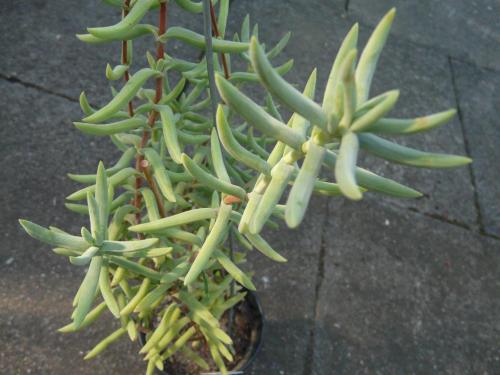
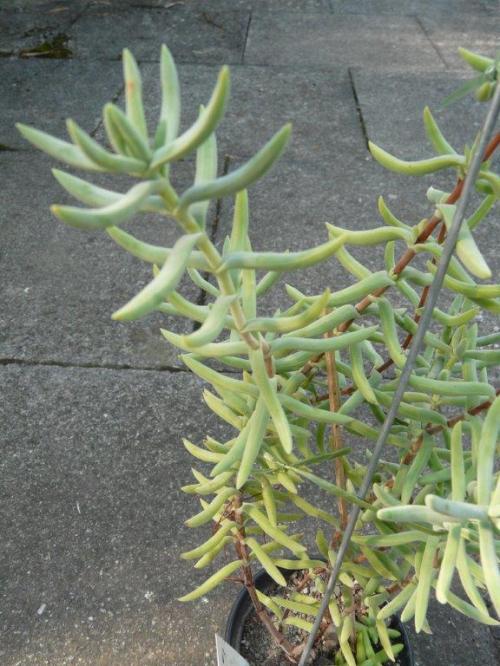
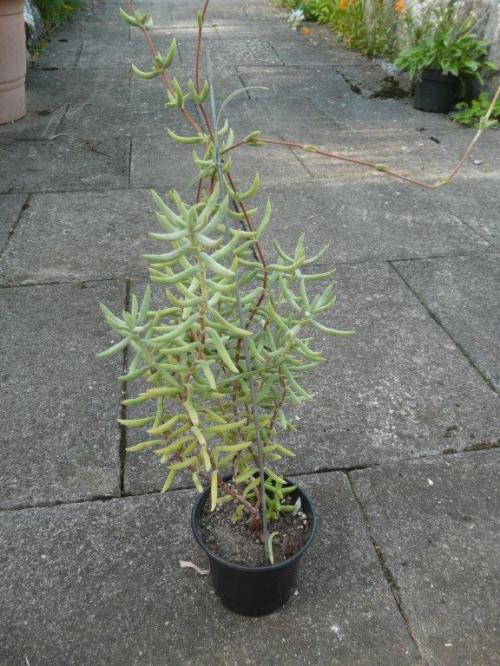
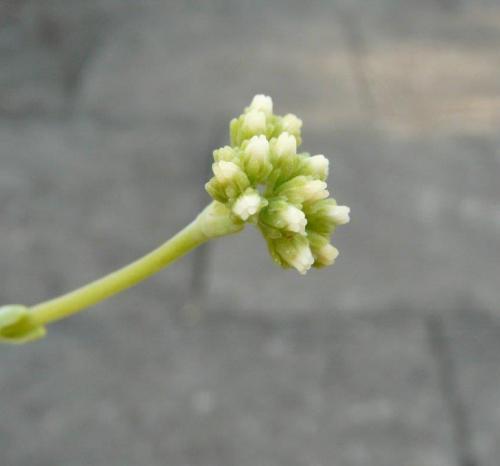
Photos Margrit Bischofberger
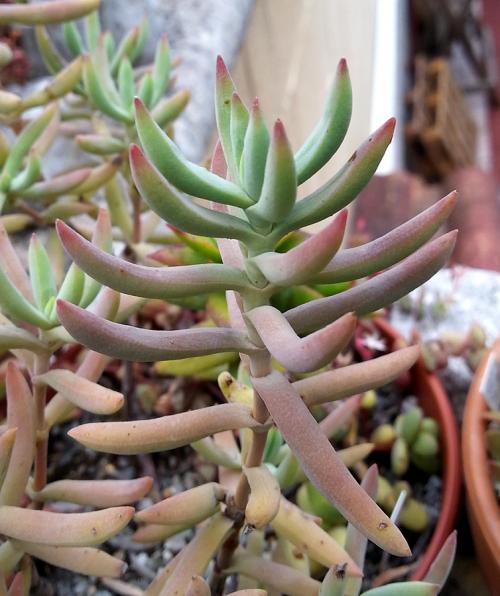
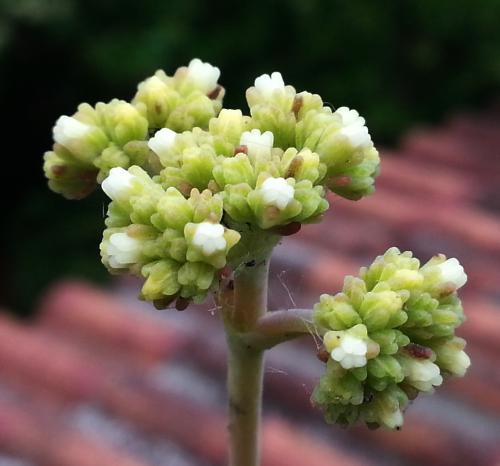
Photos Corrado Coccorese
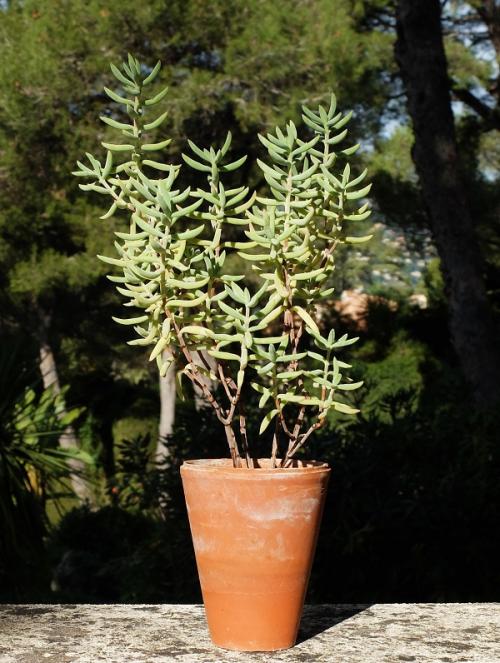
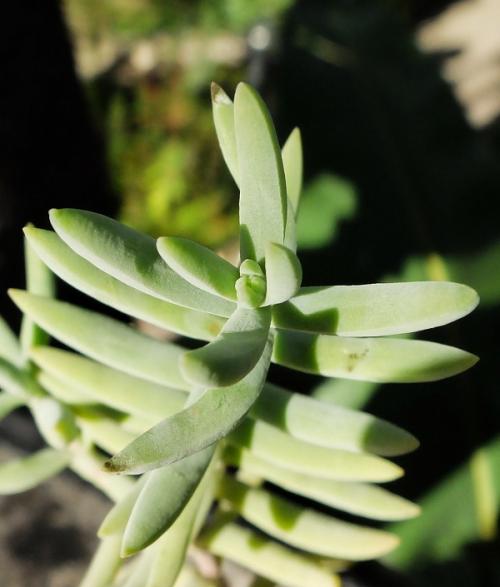
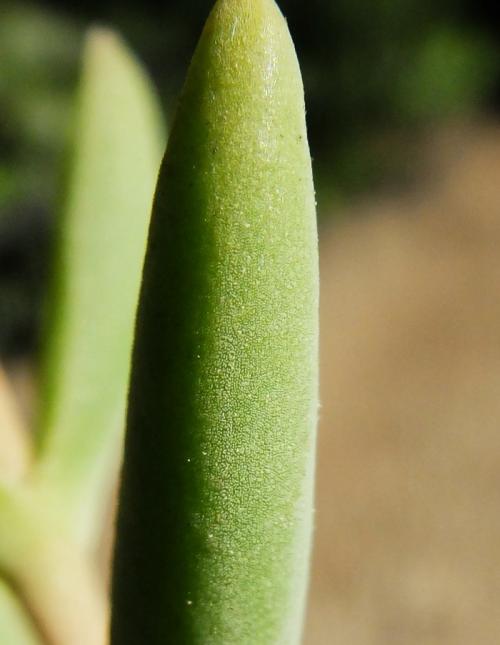
Leaf surface covered with microscopic papillae.
Détail de la feuille recouverte de microscopiques papilles.
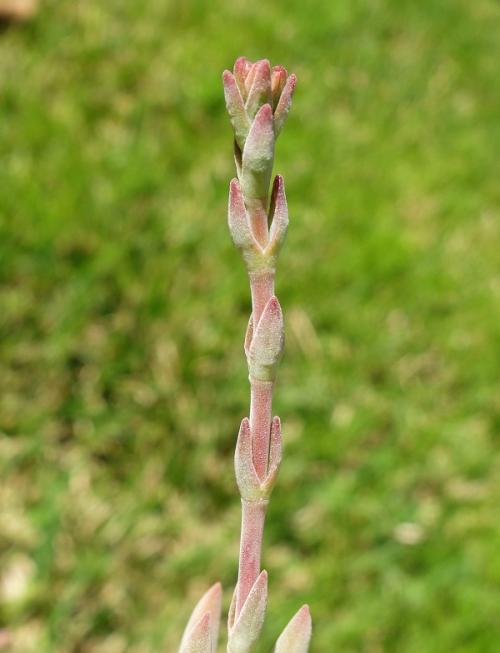
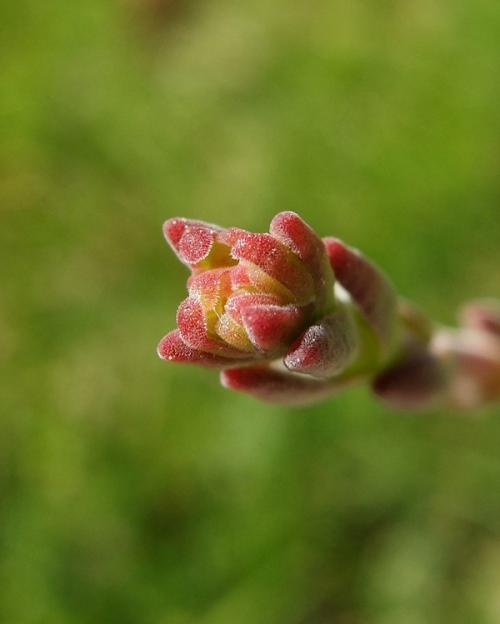
The petals correspond to the description : with elongate-ellipsoide appendage in terminal position and without membranous petal apex on inside,
Le pétale est conforme à la description de C. mollis, avec des côtés inégaux et une extrémité en forme de capuche, sans apex membraneux vers l'intérieur.
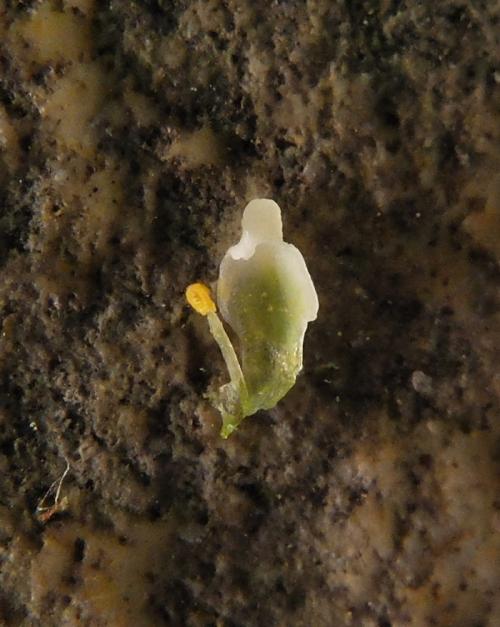
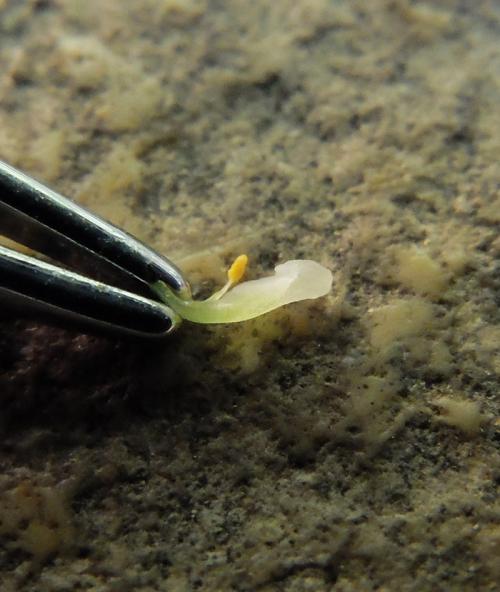
Photos Thomas Delange